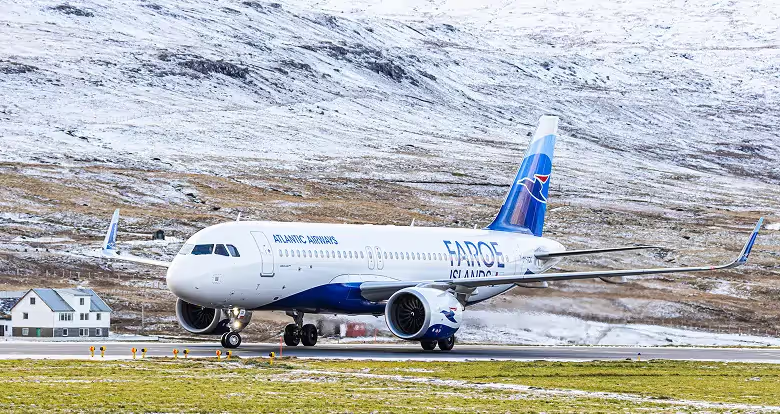FF-ICE (Flight and Flow Information for a Collaborative Environment) is a new global aviation system modernising how flight plans are shared and managed. Developed by ICAO and EUROCONTROL, FF-ICE introduces trajectory-based operations, Globally Unique Flight Identifiers (GUFI), and real-time flight data sharing. This guide explains what FF-ICE means for charter clients, how it improves operations, and why it matters for future travel reliability.
Aviation is going through a quiet digital transformation. While you won't see different aircraft or new terminals, the technology coordinating your charter flights is changing fundamentally. FF-ICE represents the biggest upgrade to flight planning systems in decades.
For charter clients, this matters because FF-ICE directly affects reliability, coordination, and how smoothly your journey unfolds when plans change.
What Is FF-ICE?
FF-ICE stands for Flight and Flow Information for a Collaborative Environment. Think of it as upgrading from sending faxes to using shared cloud documents. Everyone involved in your flight (operators, air traffic control, airports, brokers) will access the same real-time information instead of working from slightly different versions.
The current system, called FPL2012, was designed when flight planning was essentially paper-based. Controllers interpreted abbreviated codes. Information gaps got filled with radio calls and assumptions. It worked, but it had limits.
FF-ICE replaces that with digital data sharing. Your flight plan becomes a living document that updates in real-time and gets shared instantly with everyone who needs it. According to EUROCONTROL's FF-ICE implementation, this enables "trajectory-based operations" where the complete flight path is known and optimised continuously.
How FF-ICE Differs from Current Systems
The old system communicated basic information. Route, altitude, aircraft type, estimated times. Controllers filled in gaps based on experience and standard procedures.
FF-ICE transmits much more detail:
Complete trajectory data: Not just waypoints, but expected path including climb/descent profiles, speeds at each point, and precise 4D coordinates (latitude, longitude, altitude, time).
Performance information: How your specific aircraft climbs, descends, and performs. This lets air traffic management plan more accurately.
Version control: Every time the flight plan updates, everyone knows they're working from the same version. No more confusion about whether a change was communicated.
Event notifications: Automated alerts when something changes. Departure delays, route modifications, arrival updates all get shared instantly.
The difference matters when weather rolls in or airspace gets congested. Right now, coordinating changes involves multiple communications across different systems. With FF-ICE, everyone sees the update simultaneously and can respond faster.
The GUFI Revolution
One of FF-ICE's smartest innovations is the GUFI (Globally Unique Flight Identifier). Every flight gets a unique reference number that stays with it through all phases.
Currently, flights get identified by callsign, aircraft registration, and departure time. But what happens when you have similar callsigns, or the same aircraft doing multiple flights, or departure times that shift? Confusion. Messages get associated with wrong flights. Information gets lost.
GUFI solves this. Your charter gets one identifier that follows it from initial planning through landing. All messages, updates, and data link to this single reference. Controllers in different countries working with different systems still track the exact same flight.
For charter operations where plans change frequently, this is huge. When your broker modifies your route or updates timing, the GUFI ensures every stakeholder tracks the same flight accurately.
What This Means for Your Charter
You won't file FF-ICE flight plans yourself. Your broker and operator handle that. But you'll benefit from what the system enables.
Better departure predictions: Current systems estimate pushback times based on averages. FF-ICE calculates based on your specific aircraft performance and actual conditions. Arrival times get more accurate too.
Smoother weather disruptions: When routes need changing, FF-ICE lets everyone coordinate faster. Your broker, the operator, air traffic control, and destination airport all work from the same updated plan immediately.
More direct routing: With better trajectory information shared upfront, air traffic management can approve more efficient routes. Less time adding waypoints to avoid congested areas or work around restrictions that don't actually affect your flight.
Reduced delays: Strategic planning improves when everyone shares better information earlier. Congestion gets managed proactively rather than reactively.
These aren't theoretical benefits. Lufthansa filed the world's first operational FF-ICE flight plan in December 2022 for a Munich to Hamburg route. Since then, operators using FF-ICE report improved coordination and fewer last-minute surprises.
Real-World Implementation
Europe is leading FF-ICE adoption. The EU's Common Project 1 regulation mandates implementation by 31 December 2025. That's not far off. Operators and flight support services are implementing systems now.
But here's what makes this transition smooth: FF-ICE and FPL2012 will coexist for years. The old and new systems work alongside each other. Your broker can file plans in either format depending on what works best for specific routes.
This mixed-mode operation continues until 2034, when FPL2012 is scheduled to sunset. That gives everyone time to transition properly without rushing or creating operational disruptions.
For charter clients, this means you won't notice a switchover day. The change happens gradually in the background as your broker and operator implement new capabilities.
Behind the Scenes Technology
FF-ICE uses something called FIXM (Flight Information Exchange Model) as its data format. FIXM is essentially a standardised way of describing flights that computers can read reliably.
The system provides six main services:
Filing Service: Submit and update flight plans through modern interfaces with much more detail than previously possible.
Trial Service: Test potential route changes before committing. See if that alternative routing will actually work before you modify your filed plan.
Flight Data Request Service: Request current status of any flight plan. Useful when coordinating with other parties or confirming everyone has latest updates.
Publication Service: Share flight information with relevant stakeholders. Everyone who needs to know about your charter gets appropriate access.
Notification Service: Automated alerts about flight events. Departure, arrival, significant changes all generate notifications.
Planning Service: Get feedback on potential routes before finalising plans. Though not all regions implement this service yet, it helps optimise routing.
These services work together to create that collaborative environment where information flows freely among authorised parties.
Frequently Asked Questions
Do I need to do anything different to book charters?
No. Your broker handles FF-ICE implementation. The booking process stays the same from your perspective.
Will FF-ICE cost more?
No. FF-ICE is an industry-wide infrastructure upgrade, not a service fee. Your charter costs are determined by aircraft, routing, and operational factors, not by which flight planning system gets used.
What if my charter goes to regions that haven't implemented FF-ICE?
Mixed-mode operations handle this. Your flight plan gets filed in whichever format works for your specific routing. The systems translate between formats where necessary.
How does FF-ICE improve safety?
Better information sharing reduces miscommunication. More accurate trajectory data helps air traffic control maintain proper separation. Real-time updates mean everyone works from current information rather than outdated assumptions.
When will FF-ICE be fully operational globally?
Implementation is phased. Europe mandates it by end of 2025. Other regions are implementing on different timelines. Global coverage will build gradually through the late 2020s.
Does this affect cargo charter operations differently?
The technology benefits all operations equally. Cargo charters gain the same coordination improvements and trajectory accuracy as passenger charters.
Why Charter Brokers Care About FF-ICE
For brokers like Fliteline, FF-ICE represents better tools to serve you effectively. The system gives us more accurate information sooner, which means better advice about timing, routing, and operational decisions.
When weather develops or airspace restrictions appear, FF-ICE lets us coordinate changes faster with all parties. We see trajectory conflicts earlier and can suggest alternatives before they become problems.
The detailed performance data FF-ICE requires also helps with aircraft selection. We can model your specific mission more accurately and recommend options that match your needs precisely.
Most importantly, FF-ICE reduces operational uncertainty. Better shared information means fewer surprises, more reliable predictions, and smoother coordination when circumstances change.
At Fliteline, we're implementing FF-ICE capabilities as part of our ongoing investment in operational technology. Our flight support services already incorporate FF-ICE where appropriate, and we'll expand usage as the system matures.
This is the kind of behind-the-scenes technology that makes charter operations more reliable without adding complexity for clients. You benefit from improved coordination and better information without needing to understand the technical details.
Ready to discuss your upcoming charter requirements? Contact our team to explore how modern operational technology supports smoother, more reliable travel. Or explore our aircraft guide to understand which options work best for your typical routes.
Get in touch with any questions about your air charter needs



